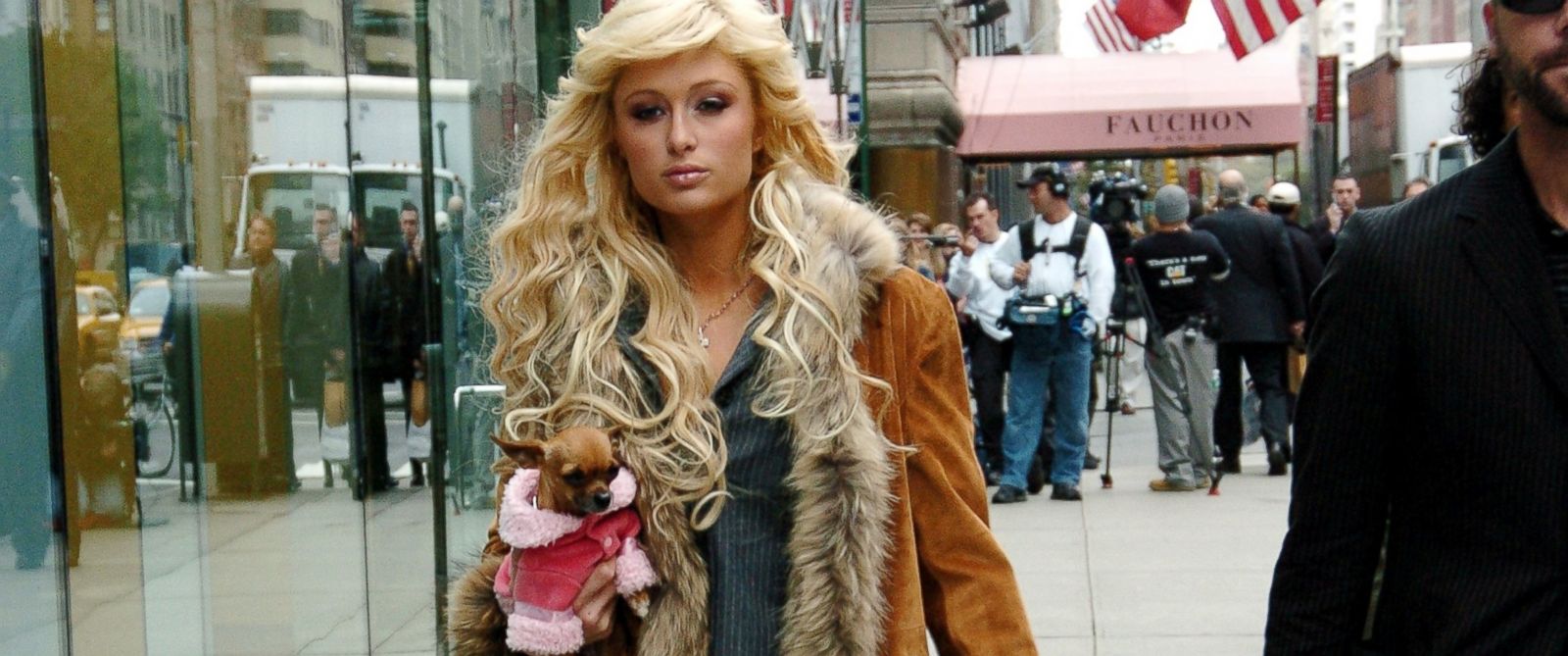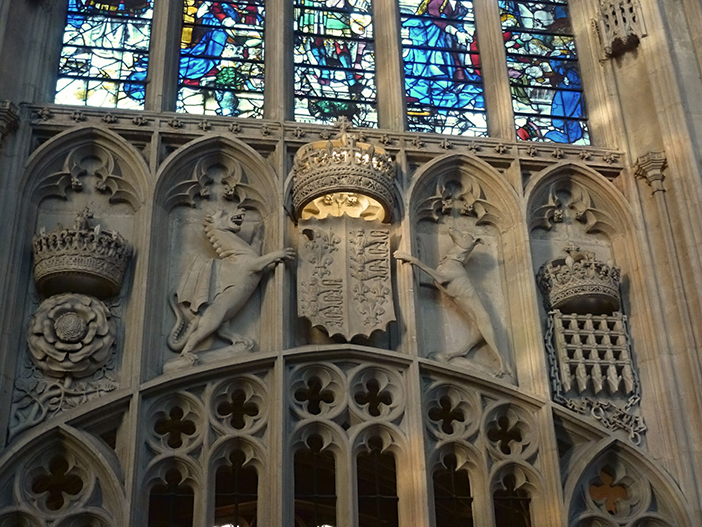Feature | Musings on the Visual Records of Medieval Dogs
Dogs are man’s best friend, and their presence seems increasingly important in society. Has this always been the case? Did people in the past love medieval dogs as much as we do?
Today, apart from the usual sightings of dogs and their owners in parks, canine creatures can be found across our social media feeds. From Instagram accounts devoted to pups, news stories from dog shows like Crofts and Westminster, or cafes where humans and hounds can enjoy a meal together, dogs are valued members of society and our culture. Just as our curated Instagram accounts show our interests today, medieval art can indicate—albeit in a less straightforward way—the values and interests of people of that time.
Medieval Dogs as Companions
[perfectpullquote align=”left” bordertop=”false” cite=”” link=”” color=”#8BD616″ class=”” size=”15″]If you can remember the early 2000s, try to think of Paris Hilton’s handbag sized Chihuahua. Tinkerbell was a small pup that served as an accessory and a companion.[/perfectpullquote]
If you can remember the early 2000s, try to think of Paris Hilton’s handbag sized Chihuahua. Tinkerbell was a small pup that served as an accessory and a companion.
You may be surprised to learn that lap dogs were not uncommon in the middle ages, particularly amongst wealthy women, and that these dogs were used for companionship and comfort, much like the late Tinkerbell.

Dogs cost money to feed and lapdogs were companions for a leisurely lifestyle, so these dogs were often found within the aristocracy and were even owned by nuns, if The Canterbury Tales can be seen as a reflection of reality. Lapdogs were often fed milk and bread, a very rich diet, and medieval texts tend to describe them as being cosseted or spoiled, without much practical purpose other than bearing away fleas. However, companionship allowed dogs and their owners to bond, and these lapdogs were emotionally significant to their owners—thus their luxurious lifestyle. The dog shown with author Christine de Pisan, for example, has a collar on. It was likely a gilded, fancy piece, perfectly suited for a beloved pet.

Another example of the lap dog features in the Codex Manesse, a collection of Middle High German poetry featuring illustrations of the authors. The folio, authored by Johannes Hadlaub, depicts his efforts to get closer to his beloved, a maiden who owns a very protective lapdog. In the top half of the photo, despite Hadlaub’s serene facial expression, the lady’s lapdog is biting Hadlaub’s hand because of the vicelike grip with which he grasped the hand of its owner. Though lapdogs were not seen to have much purpose, the dog in the Codex Manesse certainly came to the rescue.
Medieval Dogs and Visual Symbolism
[perfectpullquote align=”right” bordertop=”false” cite=”” link=”” color=”#8BD616″ class=”” size=”15″]Many dog-lovers insist that one of the reasons dogs are better pets than cats is because of their loyalty and faithfulness to their owners. This is a long-held belief, and dogs in medieval art often serve as symbols of loyalty or fidelity.[/perfectpullquote]
Many dog-lovers insist that one of the reasons dogs are better pets than cats is because of their loyalty and faithfulness to their owners. This is a long-held belief, and dogs in medieval art often serve as symbols of loyalty or fidelity.
Jan van Eyck’s famous Arnolfini Portrait features a small lapdog in the foreground. In the context of marriage and betrothal, the dog symbolizes fidelity, a faithful marriage between man and woman. Though the dog could be interpreted as a gift from man to wife, the complex iconography in various aspects of this painting create a strong case for a symbolic interpretation as well. It is worth noting that because the dog is such a small creature, the interpretation that it could only belong to the woman makes sense. A medieval man could own a hunting dog or a guard dog, but these small lapdogs fell into the female sphere of life.

Medieval dogs also appear in heraldic imagery, often signifying a loyal man who would never abandon his superiors. The man bearing a hound in arms would willingly die for his master. A white Beaufort greyhound appears in the royal arms of Henry VII, a nod to his mother, Margaret Beaufort, whose family used the greyhound as their symbol. Another interesting iteration of Henry VII’s coat of arms appears in the chapel at King’s College, Cambridge. Henry VII oversaw the building interior, and so the chapel features a stunning carving of the royal arms, greyhound and all.

Medieval Dogs and the Bestiary
The internet is filled with viral stories about dogs performing amazing feats, like Arthur, who joined a Swedish team in the Adventure Racing World Championship in Ecuador, or Gobi, who joined a contestant in a 250 kilometre run across China. Medieval bestiaries also feature wonderful tales of dogs, though the context differs. These compendiums of beasts mythical and real served as anecdotal treatises with a moralizing tone. Today, they survive in illustrated manuscripts that often belonged to wealthy families.
Bestiaries were often written using the same source materials, so the tale of King Garamantes, who likely existed only within the bestiaries, survives in several manuscripts and emphasizes the loyalty dogs were thought to possess. The images in this manuscript show Garamantes with his dogs who, after he was captured by enemies, travelled into hostile territory to escort their master to safety. The image at the bottom of the folio shows just a fraction of the 200 dogs said to have participated in the rescue as they cross a river to reach their master.
Bestiaries also attributed a degree of legal credibility to dogs. Another tale included in several of these documents tells of a man murdered in isolation, with only his dog as witness. When the dog is discovered guarding his master’s body, a crowd gathers, and the dog identifies the killer with his barking and snarling. The setting and character often change from volume to volume, but the general gist is the same: loyal dogs were able to identify murderers and seek justice for their masters. Some versions even mention a trial by combat between the dog and the accused. The manuscript pictured here shows a sheepdog and two hunting scenes, but the bottom image depicts a dog mourning his master and serving justice to the murderer.
Dog lovers everywhere, take comfort. Though medieval mutts undoubtedly led very different lives from our fluffy best friends today, they certainly didn’t escape the notice of those creating manuscripts, poems, or art.
